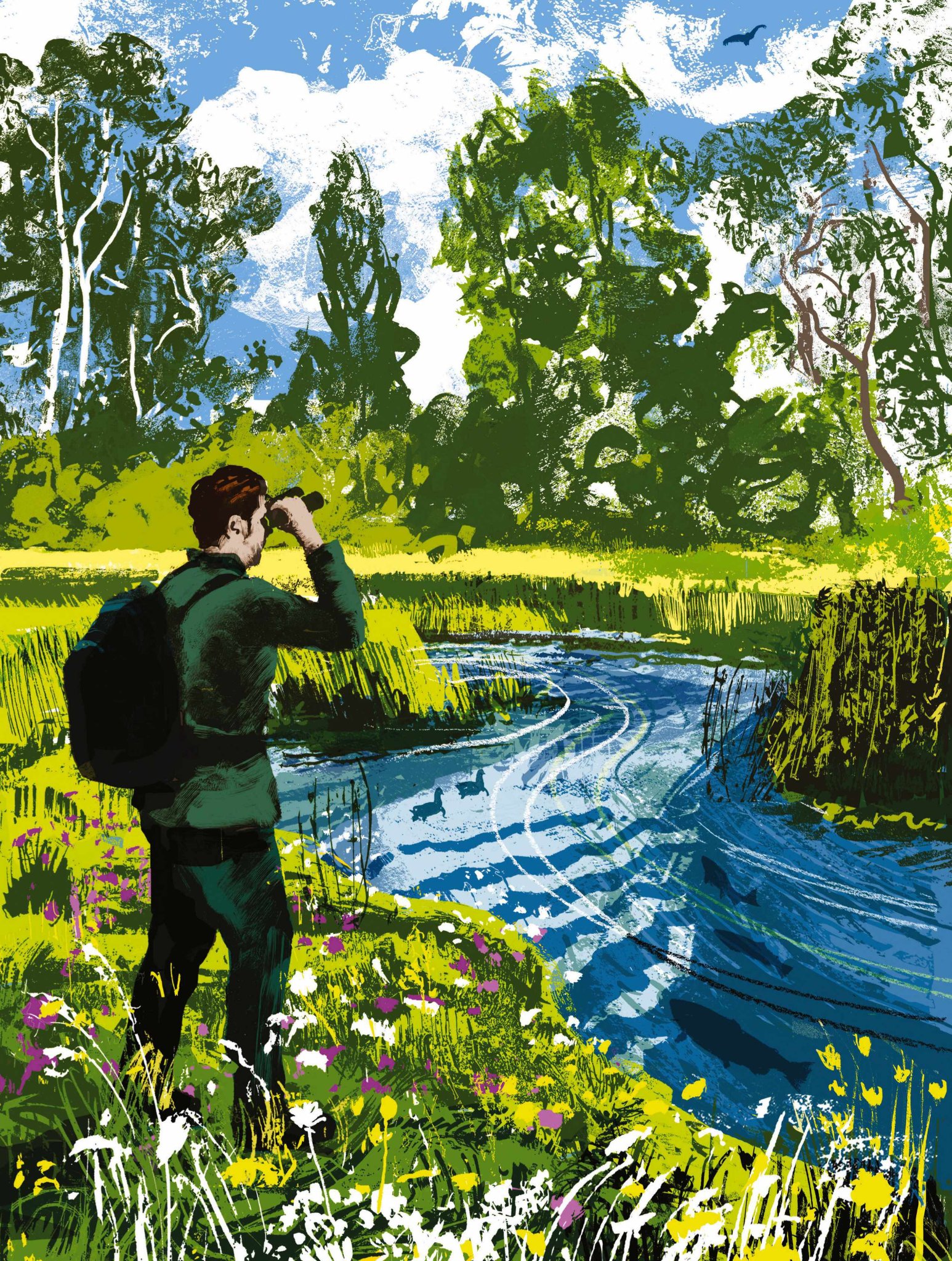
WALKING SPECIAL: NATURE
Become a nature walker
A few simple steps can help you identify more wildlife on your walks – and open up a world of beauty and fascination, says Fergus Collins
Illustrations by Andy Lovell
How would you like to never have a dull walk again? Would you like to turn every stroll into an adventure? How would you like to be able to identify the nature buzzing around you or growing by the wayside?
It sounds like quite a promise, but tuning into the natural world and learning how to find and identify more wildlife on your everyday outings will transform how you see the countryside – and how you see yourself. Plus, it will definitely impress friends and family.
Most of us get excited when we see a nature marvel. Kingfishers have us pointing and gaping. Swirling starling murmurations have rightly become one of Britain’s most celebrated spectacles. Everyone shouts “Buzzard!” when one of these raptors lazily soars overhead. Most people never go beyond these basic connections. But once you’ve taken some very simple steps, these exciting marvels can be found every day. You’ll be exclaiming “chiffchaff!” or “oil beetle!” or “cuckoo-flower” with equal relish.
“A love of nature has become my haven, where I find incredible thrills and discoveries”
HOW TO START
Perhaps the biggest barrier to immersing yourself in nature is not knowing what you are looking at, hearing or even smelling. Where do you start with identifying the flowers or birdsong in the local park? Where should you go to find wildlife? To help you, I’m going to tell you a little bit about my own journey of discovery – and how I walk into nature on an almost daily basis.
When I was eight, my godmother gave me a small telescope and The Observer’s Book of Birds. The book was full of exciting species, such as golden orioles and rough-legged buzzards. And yet all I ever seemed to see in my Somerset garden were starlings and sparrows. But it was the beginning of a curiosity that has flowered in adulthood to become my haven, my escape, my solace and where I find incredible thrills and discoveries.
WALK BY A RIVER
Let’s leave aside the whole identifying business for now – as I did back then. I’m going to take you on your first true nature walk. If you’ve ever watched a nature documentary filmed in Africa, you’ll no doubt have seen that most of the action takes place around the waterhole. It’s the same in Britain. Our rivers and lakes need a lot of TLC currently, but they are still magnets for wildlife. So find a local river, canal or lake – especially in a city – and make it your mission to go for a walk there. Go early, before dog-walkers and joggers have humanised the day and driven off the nervier wildlife. Put aside the bright jackets and walking trousers – wear muted colours that don’t rustle too much. The outdoor clothing manufacturer Páramo is famous for its rustle-free waterproofs, which make it a favourite of wildlife cameramen. Nature is timid so give yourself the best chance of seeing birds, mammals and insects by walking quietly. Slow down, pause often and avoid making sudden movements. A nature walk isn’t a mission-filled hike with a distant finishing point. It is a slow and gentle meander.
Along your river walk you will see waterbirds and birds of woodland fringes in the waterside trees. The banks should hold a wide range of plants and flowers in spring and summer.
Spend a bit of time looking at fallen leaves or feeling the texture of tree bark. Look at the canopy and relax your eyes so that they are slightly unfocused. Suddenly you’ll see the movement of birds or butterflies. Don’t forget to stop on every bridge and look over – you never know what’s beneath. I’ve often seen salmon or big pike sheltering in quite small rivers and, goodness, that does take your breath away. But even spending the time to spot toads or tiddlers in a brook or ditch is memorable.
Look for holes in the ground among tree roots or on earth banks – or worn paths leading into and out of hedgerows. All of these hint at hidden lives of rabbits, foxes, voles and badgers. You don’t need to know what – yet. Just become familiar with the signs of life.
GET TO KNOW A LOCAL ROUTE
Spend a few walks looking and learning about your surroundings and follow the same paths at different times of day. You might wonder why, in a woodland, birds seem to only appear in one area. It’s well known that sunnier southern scrubby edges of a woodland tend to be the most active areas, especially in spring, as the birds’ insect prey is more active in the warmth. Deeper woodland, away from the glades, can be surprisingly lifeless.
“I recommend starting with species that can’t fly away: trees and wildflowers”
IDENTIFYING WHAT YOU SEE
So now you’ve been walking and begun to get a feel for the life around you, you might feel it’s time to put some names to the plants, the birds, the butterflies. I’ve often been asked, why do you spend so much time trying to identify wildlife? Can’t you just enjoy the walk?
Once you start to identify the creatures and plants of a certain habitat, you begin to understand the web of life around you and suddenly your walks feel multi-dimensional.
Birds are the obvious attraction – and birders outnumber all other wildlife specialists. So if birds are your thing, the first must-have is a pair of binoculars. You don’t need to spend a fortune – mine cost me £130 (see page 62). But they are almost part of my body now.
LEARNING BIRDSONG
Increasingly, however, I have become reliant on my ears to recognise birds from their song. It has transformed my walks to the extent that I can stride through a woodland in spring and tell who’s there from the singing alone. I find it relatively easy to tell different species apart but, like learning any language, it’s about repetition and persistence. I learned in London by taking a bus to Hampstead Heath and following each birdsong until I met its maker.
You only need to learn about six birdsongs before the whole avian audio world opens up. I found that once I’d ‘got’ blackbird, robin, wren, dunnock, song thrush and great tit, I was able to spot new songs and quickly add them to my bank of melodies. Spend time listening to the marvellous recordings by Geoff Sample before going to bed and you’ll be both soothed and educated…
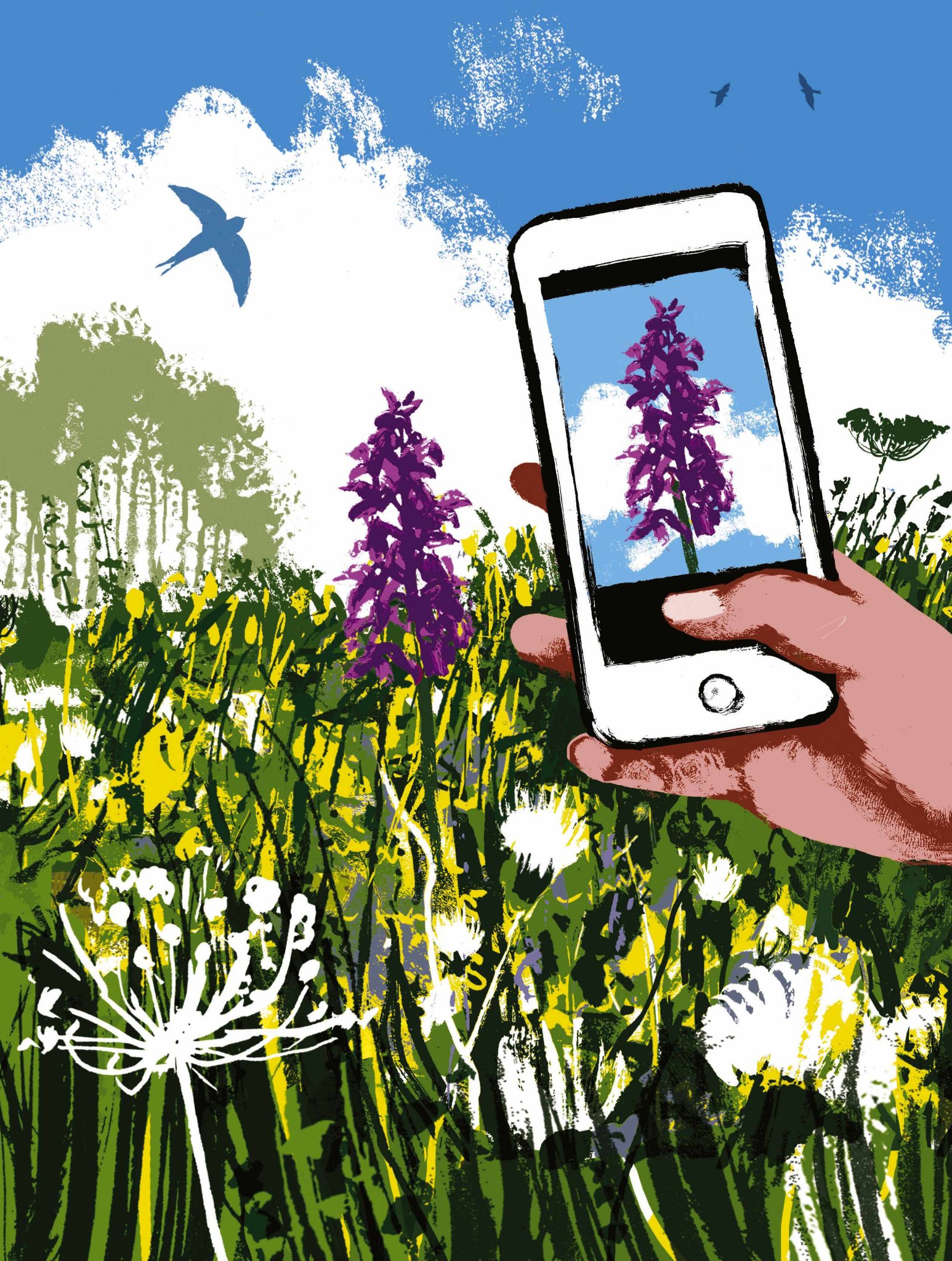
CHASING WILDFLOWERS
I also recommend starting with species that can’t fly away: trees and wildflowers. You’ll hear a lot of advice from advocates of mindfulness to leave your phone behind – and it’s good advice. However, taking photos of every species you want to identify and then leisurely learning about them back at home is one of the great pleasures of nature walking. You can even use something like Google Lens to identify flowers (or insects) out in the field – though it is not 100% reliable. And sometimes I use my phone to record birdsong that I don’t recognise. So the phone is your friend, so long as you use it spontaneously and don’t start thinking of the perfect Insta-moment. You’ll lose the connection with the real world. Some nature watchers sketch what they see to identify it later – avoiding that pesky electronic device altogether.
After I while, I started to write down what I was seeing. I would find myself watching some interesting, sometimes inexplicable animal behaviour and it made sense to record it. Before long, I was taking my nature book with me and it became a logbook, a nature diary. Occasionally on cold winter’s nights, I flick through it and relive fond outings and encounters, but it also has a practical use. I know, for instance, that 1 April is the time to look for toads spawning in pools by a local river. And that my swifts return faithfully between 2 and 4 May each year. Some diary entries are puzzling: “24 July 1999, Virginia Water: jackdaw funeral” is still my biggest mystery encounter. But that’s another story.
With regular walks, you will gain expertise on the local wildlife and notice when occasional oddities or rarities turn up. I once discovered a singing firecrest in my garden – and it was so noteworthy that a member of the local birding group came to check. It sang as he opened his car door – and I was so very grateful to the obliging little bird. If you’re like me, you’ll itch to test your burgeoning knowledge in new places where there are a different suite of wild creatures to meet. Endless adventures await!
Once you start truly seeing the nature on your country walks, you will have passed through a door into another world – aworld that is never dull.
FERGUS’S FAVOURITE WILDLIFE-WATCHING KIT
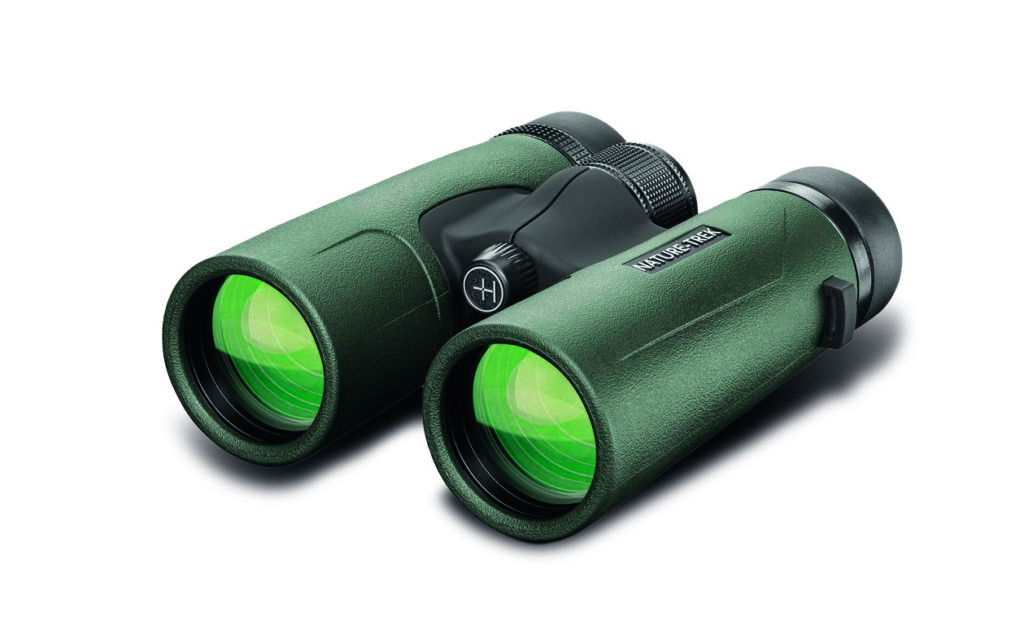
Hawke Nature-Trek Binoculars, 10×42
I have owned a pair of these for 10 years and they have great magnification and light gathering. Plus they are robust – ideal for long walks in rugged terrain. uk.hawkeoptics.com
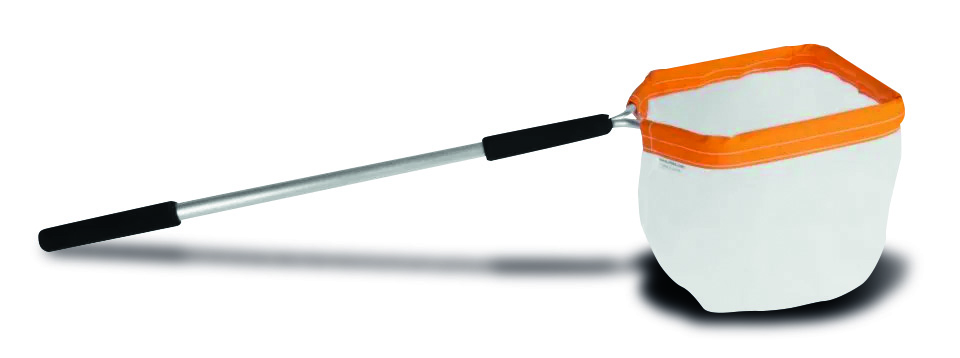
NHBS pond net
A great way to get close to dramatic nature is a bit of pond dipping. But treat yourself to a net that actually catches the good stuff. This has never let me down. nhbs.com
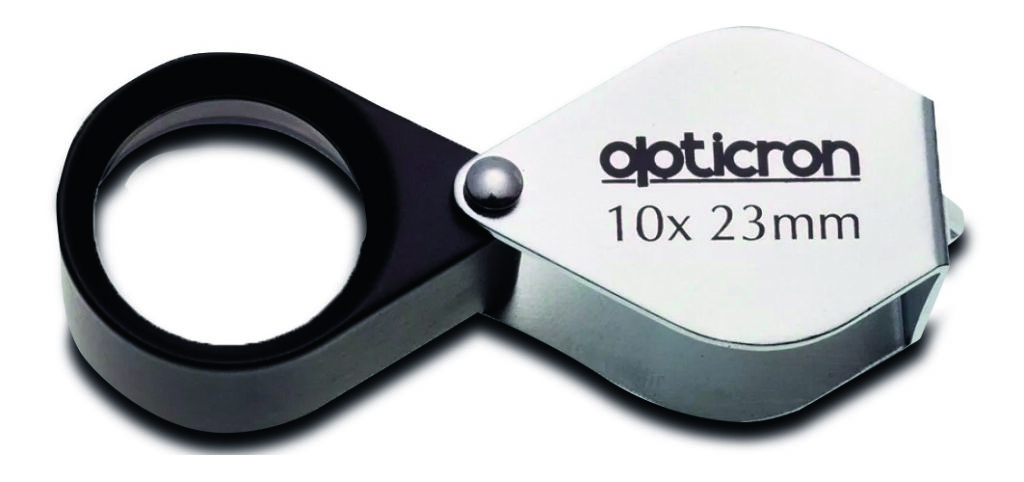
Opticron hand lens
A brilliant device for opening up a whole world of beautiful detail. 10×23 is a good starter lens and a huge help when trying to identify plants or small creatures. nhbs.com
FERGUS’S FAVOURITE NATURE READS
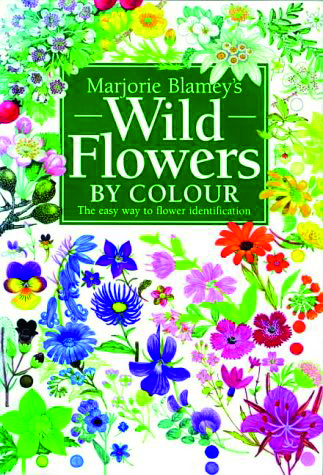
Wild Flowers by Colour by Marjorie Blamey
A beautiful and delightful book to relish our wild flora. It’s the perfect browser when you want to identify a flower by shape, size and colour. One for post-walk delving.
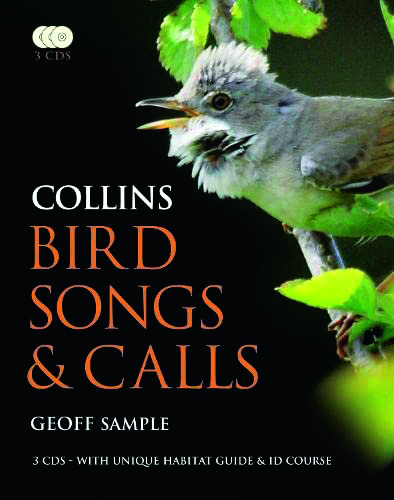
Bird Songs and Calls by Geoff Sample
Although digital birdsong identification guides are common, Geoff Sample’s commentary and beautiful recordings really take you into a habitat.
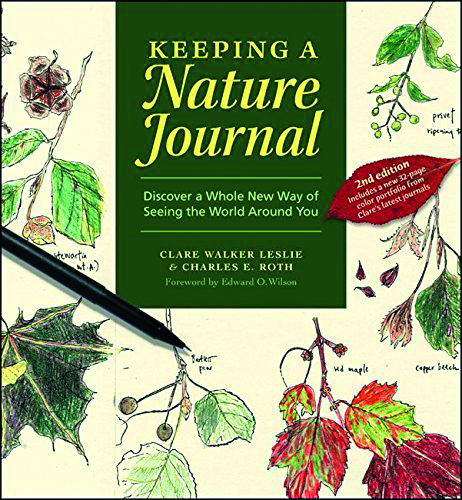
Keeping a Nature Journal by Clare Walker Leslie
This is a US publication but completely inspiring and fully relevant to a UK audience – from simple diary entries to learning how to sketch what you see.
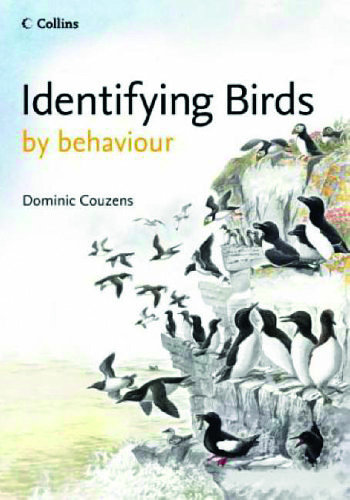
Identifying Birds by Behaviour by Dominic Couzens
A brilliant book that doesn’t just show you what the bird looks like but how it flies and walks and runs… everything useful that other guides seem to forget.
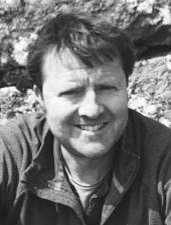
Fergus Collins is the editor of BBC Countryfile Magazine. He shares many of his nature rambles on the Plodcast – the nature and countryside podcast – available on Spotify, Apple Podcasts and all good podcast providers.